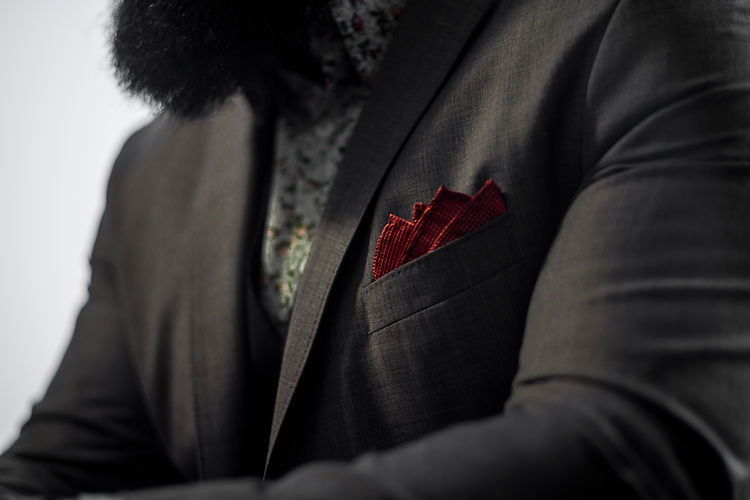Different styles of jacket sleeve buttonholes
- piphuonghoang
- Oct 6, 2023
- 3 min read
One of the unspoken benefits of wearing custom clothing is becoming a member of a unique “in-crowd” similar to the world of timepieces. Men who value high-end watches look at the wrists of those they interact with and judge whether you’re “one of us” or not based on what they see. Suit enthusiasts will often look for functional sleeve buttonholes on jackets with the same intent.

In short, those who know, know. One way to add a little flair to a jacket and demonstrate that you, too, are one of the sartorial cognoscenti, is to opt for a non-standard sleeve buttonhole style.
Jacket Sleeve Buttonhole Styles

Old-school menswear enthusiasts might call them “surgeon’s cuffs,” and they’re a hallmark of a garment that was made expressly for an individual customer. The sections below will show the different ways these functional buttonholes can be expressed on a sleeve.
Note that in some cases, it has more to do with the arrangement of the buttons themselves.
Standard Buttons

Standard sleeve button arrangements are just that – standard. The buttons align in a row and do not make contact with each other. You’ll find this on most off-the-rack jackets, and custom jackets typically default to this style unless the client requests otherwise.
Spacing between the buttons can vary, with 1/4″ typically being the maximum.
Kissing Buttons

“Kissing” buttons just barely make contact with each other, reminiscent of giving someone a peck on the cheek. Note that the name isn’t “French kissing buttons.”
If this detail could communicate, it would be a subtle whisper. We recommend this sleeve button style to anyone who wants to add some subtle sophistication to a garment.
Waterfall Buttons

Waterfall buttons are arranged in such a way that they appear to cascade over one another. This takes up less room on a sleeve than standard or kissing buttons. Popularized by Zegna’s ready-to-wear garments, waterfall buttons are a handsome detail that serves as a gentle tap on the shoulder to your audience, telling them that you have an eye for unique details.
Angled Buttonholes

If you think about it, every buttonhole is angled. It’s just that most often we see buttonholes at a 90-degree angle to the edge of the sleeve vent! For the purposes of this discussion, “angled” buttonholes refers to sleeve buttonholes on a 45-degree angle.
A more fashion forward look than anything mentioned up to this point, angled buttonholes are typically the provenance of young, fashion-centric guys. They’ll often pair them with contrast buttonhole colors to draw attention to the angling.
While this look is great fun, we don’t recommend it for anything sartorially conservative.
Functional Sleeve Buttonholes – “Surgeon’s Cuffs”

It’s customary for custom and made-to-measure jackets to feature working sleeve buttons. This is a detail that we save for the very end of the process to include – cutting these buttonholes in house ourselves allows us to make sleeve alterations, if necessary.
Functional sleeve buttonholes are a hallmark of the custom clothing tradition, and it’s typical for our clients to style them with contrasting threads and leave the one closest to the hem undone. It’s a way to gently whisper “I had this made for me” to the rest of the world.
Fun fact: these are also known as “surgeon’s cuffs.” This hearkens to the 19th century. Doctors at the time made house calls and didn’t wear lab coats, but rather suits. Decorum dictated that they didn’t remove their jackets, so they had to be able to roll their sleeves up. This is where the name comes from.






Comments